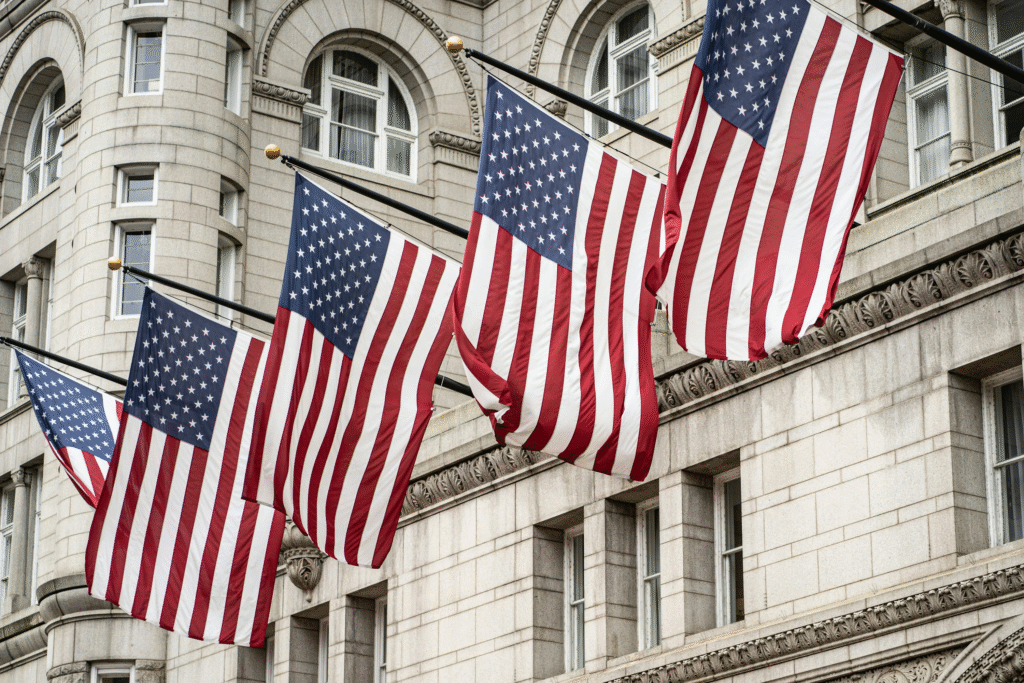In the United States, a new law is encouraging several big companies to explore creating their own stablecoins — a special kind of cryptocurrency that is tied to the value of the U.S. dollar. This could change the way people pay for things and send money, but experts believe there are still many hurdles to cross before stablecoins become a part of everyday life.
On July 18, 2025, U.S. President Donald Trump signed a new bill called the GENIUS Act. This law is the first in the country to set clear rules for stablecoins. These are cryptocurrencies that are linked to the U.S. dollar, meaning one stablecoin is always worth about one dollar. The idea is to make them stable, unlike other cryptocurrencies such as bitcoin or ether, which can change in value very quickly. The GENIUS Act aims to give people more trust in using digital money by making sure it follows strict federal guidelines.
For years, stablecoins have mostly been used by people in the cryptocurrency world. Traders used them to quickly move money in and out of other coins without worrying about sudden price changes. But now, big companies are seeing an opportunity to use stablecoins for everyday payments and money transfers. This is because stablecoins can make transactions almost instant, while normal banking systems can take days — especially for payments that cross international borders.
Financial giants such as Bank of America and Fiserv are already looking at how they can create their own dollar-backed stablecoins. Reports have also mentioned that Walmart and Amazon are exploring similar ideas, though these companies have not confirmed any details yet. If they move forward, it could mean that one day you could shop online, buy groceries, or pay bills using a stablecoin issued by one of these companies.
The potential benefits are clear. Imagine you want to send money to a family member in another country. Right now, it might take days for the money to reach them, and you might have to pay high fees. But with stablecoins, the transfer could happen in seconds and cost much less. Similarly, stores could receive payments instantly, instead of waiting for banks to process them.

However, while the GENIUS Act has opened the door, experts caution that walking through it will not be easy. Building a stablecoin system that is safe, legal, and widely trusted is a complex process. Companies will need to follow the strict rules set by the new law, such as keeping enough real dollars in reserve to match the number of stablecoins they issue. This is to ensure that customers can always exchange their stablecoins back into dollars without any problems.
Another challenge is public trust. Many people still do not fully understand how cryptocurrencies work. Some worry about scams, hacking, or technical failures. If companies want their stablecoins to succeed, theywill need to educate customers and show them that these digital dollars are just as safe — or safer — than the money in their bank accounts.
Banks might take a slightly different approach. Some experts think banks could create their stablecoins on private blockchains — digital systems where only certain approved members can make transactions. This could make the system more secure and give banks more control over who uses their stablecoins. For example, a bank could allow only verified customers to use its digital currency, reducing the risk of fraud.
Still, making stablecoins part of everyday life will take more than just good technology. It will require cooperation between banks, companies, regulators, and even foreign governments. Payments do not stop at national borders, and if stablecoins are to be used for international trade, there will need to be agreements between countries about how they are managed and regulated.
The GENIUS Act is the first major step the U.S. government has taken to create a clear framework for digital currencies. Supporters say this could help the United States stay competitive in the fast-growing digital economy. Countries like China are already testing their own digital currencies, and some smaller nations have moved quickly to accept cryptocurrencies. By setting rules now, the U.S. hopes to encourage innovation while protecting consumers.
But there is also caution in Washington. Lawmakers and regulators want to make sure stablecoins do not threaten the stability of the financial system. If too much money moved from banks into stablecoins too quickly, it could affect lending, interest rates, and even the economy as a whole. This is why the GENIUS Act includes detailed requirements for audits, reporting, and oversight.
For companies, the decision to create a stablecoin will involve balancing potential rewards with significant risks. On one hand, launching a trusted stablecoin could open new markets, attract tech-savvy customers, and speed up transactions. On the other hand, any failure — whether from a technical issue, a hack, or a regulatory problem — could cause huge losses and damage their reputations.
The road ahead will also depend on how quickly people adopt this new way of paying. Some might welcome it right away, enjoying faster payments and lower costs. Others may stick to traditional payment methods until they feel completely confident in the safety and usefulness of stablecoins. History has shown that even when technology is better, it takes time for society to fully embrace it.
The next few years will likely be a testing period. Companies may launch pilot programs to see how customers respond. Banks may experiment with private stablecoin networks. Retailers might offer small discounts for customers who pay with their digital tokens. At the same time, regulators will be watching closely, ready to step in if there are signs of misuse or risk.
In many ways, the story of stablecoins is just beginning. The GENIUS Act has provided a starting line, but the real race will be in how companies, banks, and the public adapt to this new form of money. If they succeed, stablecoins could become as common as credit cards or online banking. If they fail, they may remain a niche tool used mainly by cryptocurrency traders.
For now, the message from experts is clear: the opportunities are big, but so are the challenges. The next chapter in America’s financial history will depend on how wisely — and how carefully — these new digital dollars are brought into the world.


